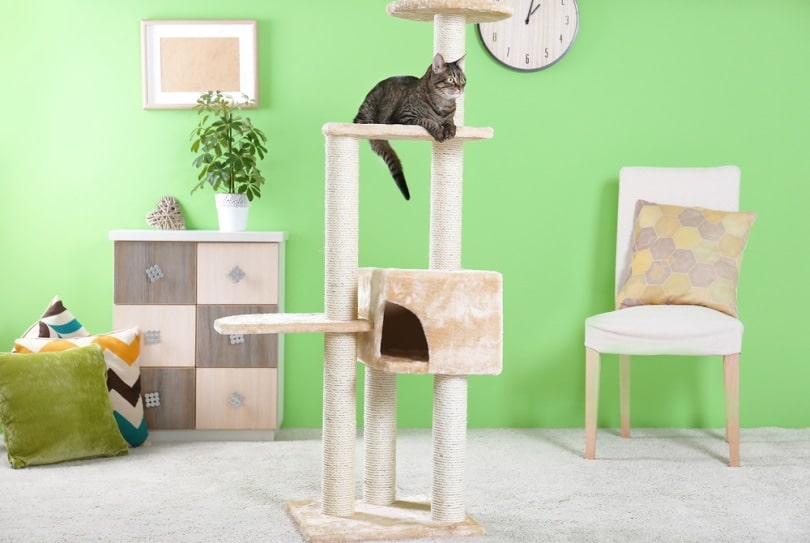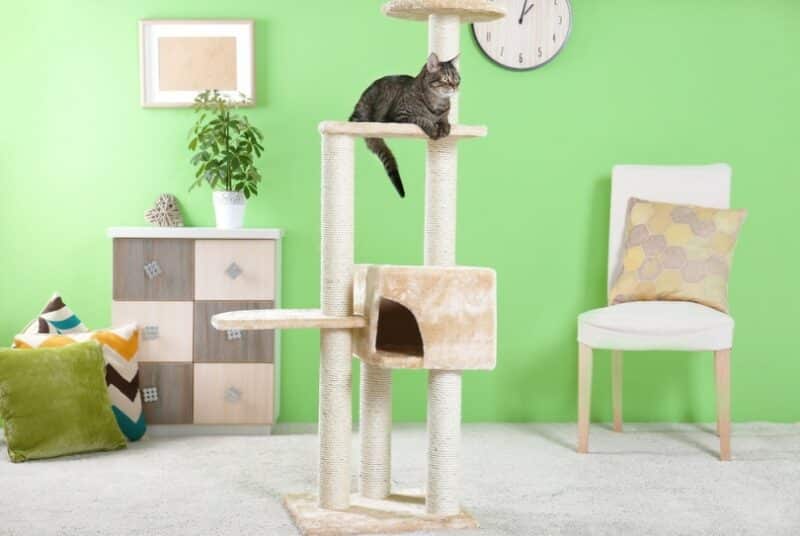When they’re in the mood, cats love to play and throw themselves around. It can be fun to watch but also worrying when their favorite cat tree isn’t stable enough to withstand their playful vigor. It’s essential to ensure your cat tree doesn’t fall over and hurt your cat.
Fortunately, stabilizing a cat tree is an easy DIY project you can handle at home with the right tools. To start making your cat tree sturdier, here are a few tips and tricks to help.
The 10 Tips to Make a Cat Tree More Stable
1. Consider the Warranty
Before fixing your cat tree, consider whether it’s still under warranty. Most cat trees you buy from a store are covered by a warranty (if you made a DIY cat tree, you can ignore this).
If you start changing the perches or securing more plywood to the base of your cat tree, you’ll void the warranty and won’t be covered if something breaks later. If your cat tree is past its warranty, grab a few tools to start your project.
2. Work Your Way Up
Before you begin, you must approach your DIY project from the right angle. While you can start by securing the cat tree to a wall, you’ll have to undo everything later if you realize the base needs work, too.
You can modify the bottom of the cat tree before adjusting the perches and adding safety straps. This is also true if you’re making a cat tree from scratch. The better your base is at the start, the sturdier your finished product will be.
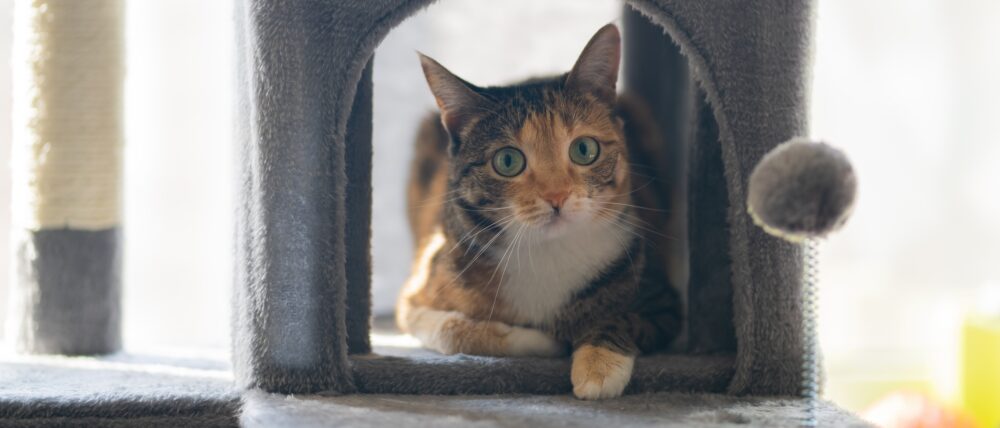
3. Use the Right Tools
When stabilizing your cat tree, using the right tools is the most important thing you can do. You need to ensure the metal brackets you use are sturdy enough to hold the weight of your cat tree and cat. The screws also need to be big enough to dig deep into the wall to secure the cat tree.
Other tools, like cat-safe adhesive, safety straps, hemp or sisal rope, and heavy fabric, can all be considered. Examine your cat tree first to determine why it’s wobbling and what tools you’ll need to make it sturdier.
4. Weigh Your Cat
Ensuring your cat tree is sturdy enough for your cat before you purchase or make it. Weighing your cat enables you to ensure they’re not too heavy for the cat tree.
You need a cat tree that is heavier than your cat, whether you have one or several felines at home. While it might not prevent the cat tree from wobbling a little when they jump on it, it’ll reduce the chances of it breaking or tipping over.
If your cat won’t stay on the scale, try weighing yourself alone and then again while holding your cat. Make a note of both weights and subtract yours from the combined result of you and your cat. This will give you a rough but helpful idea of how much your cat weighs.
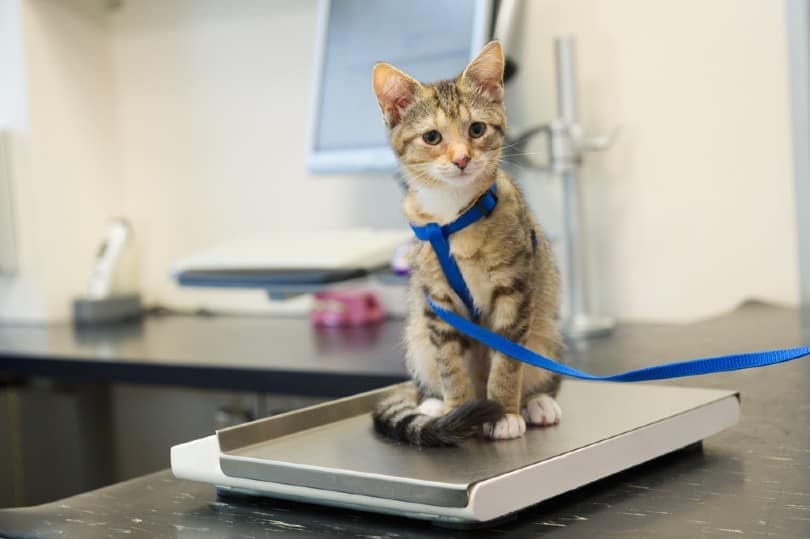
5. Place on an Even Floor
The place where you decide to put your cat tree makes a difference. If you’ve ever sat on a dining chair with three legs on a rug and one hanging off the edge, you’ll know how much it wobbles. The same is true for a cat tree.
Make sure the base is on solid, even flooring. If the floorboards are warped, or there’s a dip in the floor, your cat tree will be likelier to wobble or lean to one side.
6. Place in a Corner
Similar to the flooring in the area where you place your cat tree, you also need to position it against a wall. For large cat trees, in particular, corners provide an easy way to stop your cat tree from falling over when your cat jumps from perch to perch. A corner will also give you plenty of wall space to secure your cat tree with safety straps and metal brackets.
For the best results, use a supporting wall that is sturdy enough to secure the cat tree. You need one with plenty of studs that you can drill into, and you should use long enough screws that they won’t get ripped out under pressure.
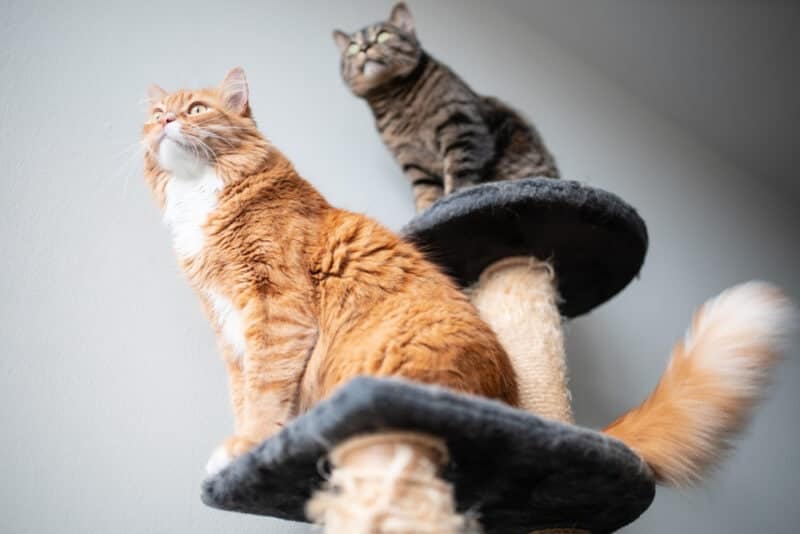
7. Add Weight to the Tree
The best cat trees always have a broad, heavy base. This ensures the cat tree isn’t top-heavy and has a low center of gravity. If you make a DIY cat tree or need to add weight to your existing tree, consider widening the base first. Even if you plan to secure the cat tree to a wall, a wide base will make the tree much sturdier.
It doesn’t take much work, either. Plywood is lightweight, easy to cut, and is one of the best materials for a cat tree base. Cut a piece that’s bigger than your cat tree’s existing base, and secure it in place with screws. Add the new base to the existing one to give the tree extra weight.
8. Secure the Perches
If you’ve secured the cat tree to a wall and made the base wider, but it’s still wobbling, it might be due to the perches. Age and general wear and tear can make the fittings loose, or perhaps you didn’t tighten the screws enough when you assembled the tree. In both cases, no matter how much you weigh the tree down or fix it in place, the perches will still be unstable.
Tighten all the screws connecting the parts of the cat tree. You might have to change the screws that came with the cat tree to longer, more reliable ones. Also, remember to wrap metal safety straps and brackets with thick padding so your cat won’t hurt themselves on them while they play.
9. Test
Once you’ve secured all the parts of your cat tree to make it more stable, it’s time for testing. The best way to do it is to let your cat climb around and play like they always do. Supervise them while they do this to ensure that the cat tree doesn’t move while your cat is playing, no matter how excited they get.
If you’ve managed to tackle everything that was making the cat tree unstable, you’ll be able to let your cat enjoy their cat tree in peace. Be prepared to readjust a few things if the cat tree is still wobbling.
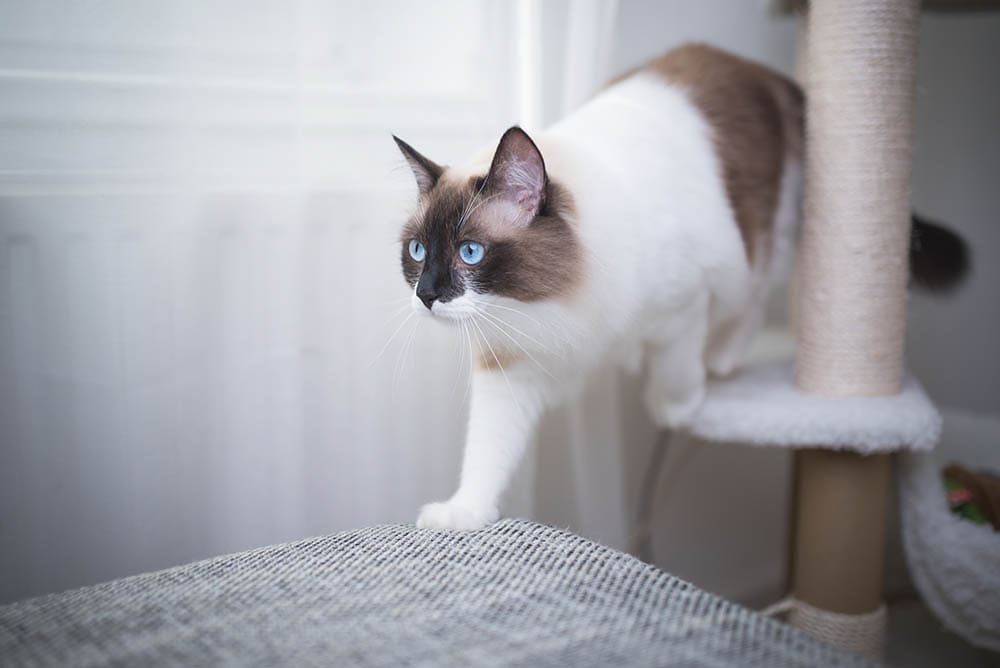
10. Buy a New Tree
Sometimes, there’s nothing that you can do to improve a cat tree. Maybe it’s too old and worn out, or your cat has outgrown it. Although kittens can be more active than adult cats, they’re also much lighter.
Once your cat is fully grown, their weight and exuberant play style might be too much for your cat tree to handle. If stabilizing your cat tree will cost more than buying a new one, it might be time to move on.
Why Should You Secure a Cat Tree?
While you might not have a problem with a short cat tree, a tall cat tree is less stable simply due to its height. That is why it’s recommended to secure it against a wall and place it in a corner to give it extra stability. There are several reasons that unstable cat trees are dangerous not just to your cat but also to you and your children.
Injury
For safety reasons, cat trees are designed to be heavy. When your cat hops from perch to perch, the tree can wobble if it’s not secured properly. If you have several cats fighting over the top perch, they may even make it wobble enough to topple over.
A falling cat tree can injure your cat, but it can also damage nearby furniture or land on children playing with your cats around the tree.
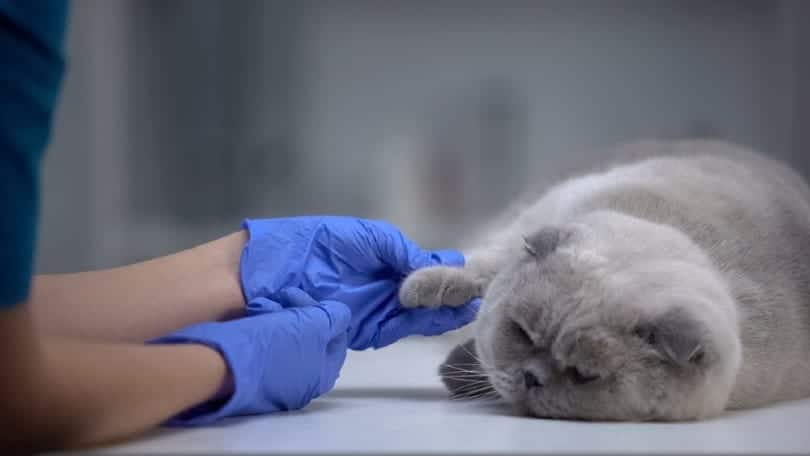
Trauma
It’s not just the injury that your cat can sustain that they have to recover from but the trauma from experiencing the injury in the first place. If your cat associates your cat tree with danger, pain, and fear, they’ll stop using it.
Sometimes, a bad fall isn’t the only thing that will upset your cat. The wobbling of a cat tree can be disconcerting enough that your cat won’t climb it at all, no matter how enticing the highest perches are. If they don’t feel safe, they’ll stay away.
Conclusion
If your cat loves to jump around and observe you from high spots around the house, a cat tree is an essential addition to your home décor. They’re fun and cozy, with plenty of space for your cat to nap or be out of the way for a while. However, they can also be dangerous, and ensuring they are stable will keep your cat safe as they play or climb up to the top. Make sure your cat tree is sturdy by following these tips and tricks.
See Also:
- 15 Amazing DIY Floor to Ceiling Cat Tree Plans You Can Create at Home (With Pictures)
- How to Reupholster a Cat Tree (13 Useful Tips)
Featured Image Credit by: Africa Studio, Shutterstock

